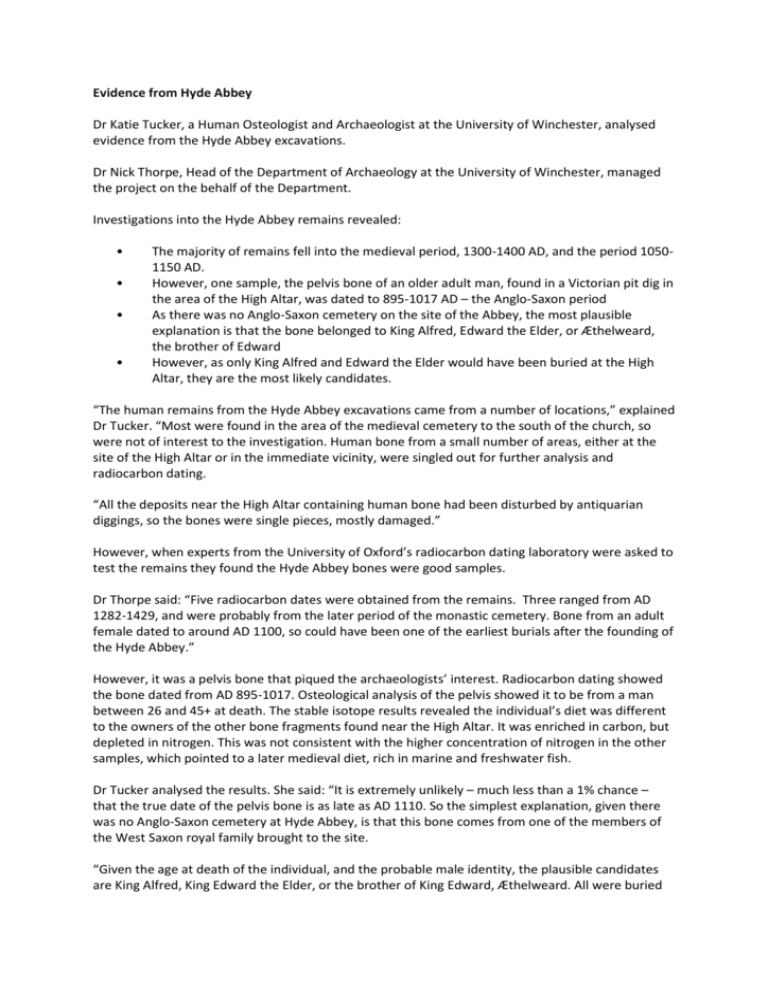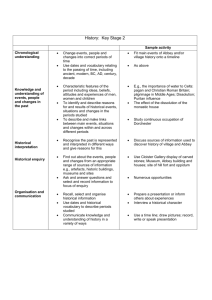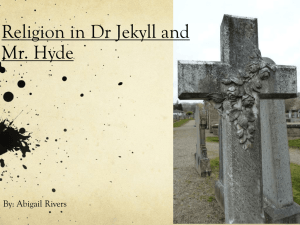Evidence from Hyde Abbey - University of Winchester
advertisement

Evidence from Hyde Abbey Dr Katie Tucker, a Human Osteologist and Archaeologist at the University of Winchester, analysed evidence from the Hyde Abbey excavations. Dr Nick Thorpe, Head of the Department of Archaeology at the University of Winchester, managed the project on the behalf of the Department. Investigations into the Hyde Abbey remains revealed: • • • • The majority of remains fell into the medieval period, 1300-1400 AD, and the period 10501150 AD. However, one sample, the pelvis bone of an older adult man, found in a Victorian pit dig in the area of the High Altar, was dated to 895-1017 AD – the Anglo-Saxon period As there was no Anglo-Saxon cemetery on the site of the Abbey, the most plausible explanation is that the bone belonged to King Alfred, Edward the Elder, or Æthelweard, the brother of Edward However, as only King Alfred and Edward the Elder would have been buried at the High Altar, they are the most likely candidates. “The human remains from the Hyde Abbey excavations came from a number of locations,” explained Dr Tucker. “Most were found in the area of the medieval cemetery to the south of the church, so were not of interest to the investigation. Human bone from a small number of areas, either at the site of the High Altar or in the immediate vicinity, were singled out for further analysis and radiocarbon dating. “All the deposits near the High Altar containing human bone had been disturbed by antiquarian diggings, so the bones were single pieces, mostly damaged.” However, when experts from the University of Oxford’s radiocarbon dating laboratory were asked to test the remains they found the Hyde Abbey bones were good samples. Dr Thorpe said: “Five radiocarbon dates were obtained from the remains. Three ranged from AD 1282-1429, and were probably from the later period of the monastic cemetery. Bone from an adult female dated to around AD 1100, so could have been one of the earliest burials after the founding of the Hyde Abbey.” However, it was a pelvis bone that piqued the archaeologists’ interest. Radiocarbon dating showed the bone dated from AD 895-1017. Osteological analysis of the pelvis showed it to be from a man between 26 and 45+ at death. The stable isotope results revealed the individual’s diet was different to the owners of the other bone fragments found near the High Altar. It was enriched in carbon, but depleted in nitrogen. This was not consistent with the higher concentration of nitrogen in the other samples, which pointed to a later medieval diet, rich in marine and freshwater fish. Dr Tucker analysed the results. She said: “It is extremely unlikely – much less than a 1% chance – that the true date of the pelvis bone is as late as AD 1110. So the simplest explanation, given there was no Anglo-Saxon cemetery at Hyde Abbey, is that this bone comes from one of the members of the West Saxon royal family brought to the site. “Given the age at death of the individual, and the probable male identity, the plausible candidates are King Alfred, King Edward the Elder, or the brother of King Edward, Æthelweard. All were buried in the Abbey. However, historical evidence indicates that only the coffins of Alfred and Edward were at the site of the High Altar. The discovery of the bone in a pit dug into the graves in front of the High Altar makes it far more likely that it comes from either Alfred or Edward.” Dr Nick Thorpe added: “The Department of Archaeology is extremely excited to have been able to plausibly link this human bone to one of these two crucial figures in English history. “We also believe that we are thereby helping the city to right a historical wrong done to the remains of these great kings, which began with the dissolution of Hyde Abbey in 1539, to be followed by centuries of neglect, destruction and disturbance up to the last antiquarian diggings in 1901. Monks brought their remains to Hyde in 1110 because they wanted to preserve and honour them, and this project enables us to do this once more.”








